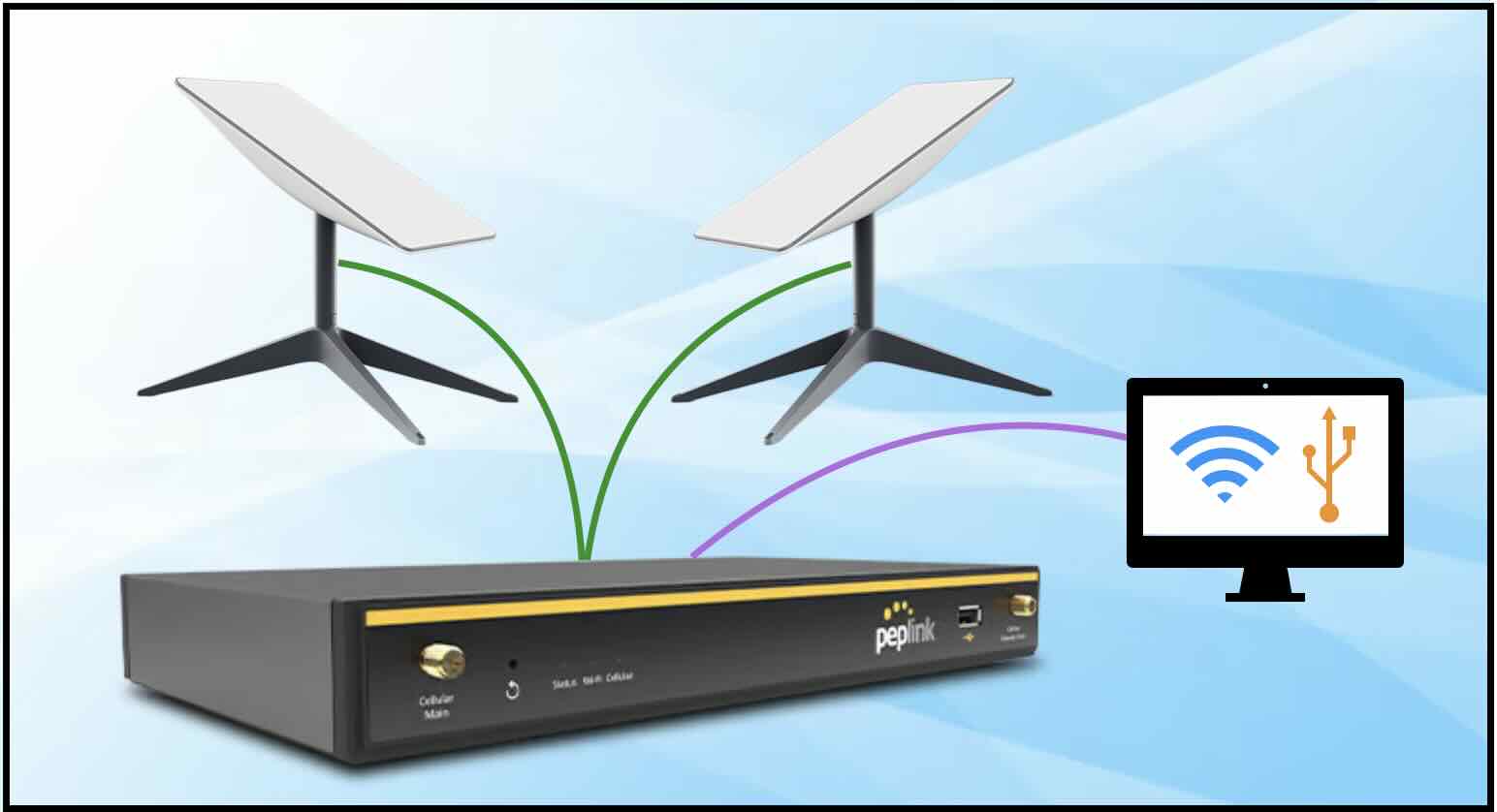
Brud’s Challenge
Brud from Texas contacted our team at 5Gstore.com with a specific networking challenge. He was using a Peplink Balance 20x router configured to handle two Starlink connections: one on WAN1 and the other on a USB WAN interface. However, both Starlink modems were set with the same LAN IP address (192.168.1.1) for their gateways, creating a network conflict that disrupted his connectivity. Not only was he looking to solve this connectivity issue, but he also wanted to ensure he had the best setup in place.
Our Solution
To address this issue, our first step was to collaborate with Brud to understand the intricacies of his network setup. Here’s what we did:
- Enable IP Passthrough on the Second Starlink System: We advised Brud to enable IP passthrough mode (aka Bypass mode) on the second Starlink system. This crucial step allowed the Balance 20x router to receive the public IP address directly from the second Starlink modem, effectively resolving the conflict caused by both modems having the same gateway IP address.
- Optimize USB WAN Interface Configuration: To enhance the configuration, we relocated the USB WAN interface to the Virtual WAN1 (VWAN1) port on the Peplink Balance 20x router. This adjustment was necessary to enable the Starlink feature for both WAN and VWAN ports, ensuring comprehensive connectivity and load-balancing capabilities across all interfaces.
- Enable Load Balancing: We enabled load balancing on the outbound policy of the router for both WAN and VWAN interfaces. This configuration was critical to evenly distribute network traffic between the two Starlink connections, enhancing overall performance and reliability. You may be wondering why we selected this over bonding. Due to the number of devices that need to upload data online, the customer did not want to use bonding because it would add extra points of contact to his network, which he wanted to avoid.
- Verify Active Sessions: As part of the troubleshooting process, we meticulously checked active sessions to confirm that the router was correctly load balancing local traffic. This verification step was crucial to ensure that both Starlink connections were actively and effectively utilized without any performance degradation.
The Results
After implementing these adjustments and confirming the configurations were correct, we obtained the following results:
- Conflict Resolution: By enabling IP passthrough on the second Starlink modem, we resolved the IP address conflict, allowing the Peplink Balance 20x router to function without interruptions.
- Enhanced Network Efficiency: Relocating the USB WAN interface to the VWAN1 port and enabling the Starlink feature on both WAN and VWAN ports optimized the router’s configuration, ensuring maximum efficiency.
- Improved Performance and Reliability: With load balancing enabled, network traffic was evenly distributed across both Starlink connections. This setup significantly improved overall network performance and reliability, providing Brud with a stable and efficient internet connection.
- Comprehensive Validation: Our thorough verification process ensured that the router was operating as intended, with traffic balanced over both Starlink connections. This validation confirmed that the dual Starlink setup was effectively leveraged to optimize network performance.
To ensure transparency and facilitate future troubleshooting, we provided Brud with a backup of the device configurations and documented all the implemented changes.
Look to 5Gstore.com for Support
Brud’s success story is a testament to the expertise and dedication of the 5Gstore.com support team. If you need help and have nowhere to turn (even if you are not a 5Gstore customer), check out 5Gstore advanced support paid options. Our team is here to help you optimize your network setup and ensure you get the most out of your technology investments.

